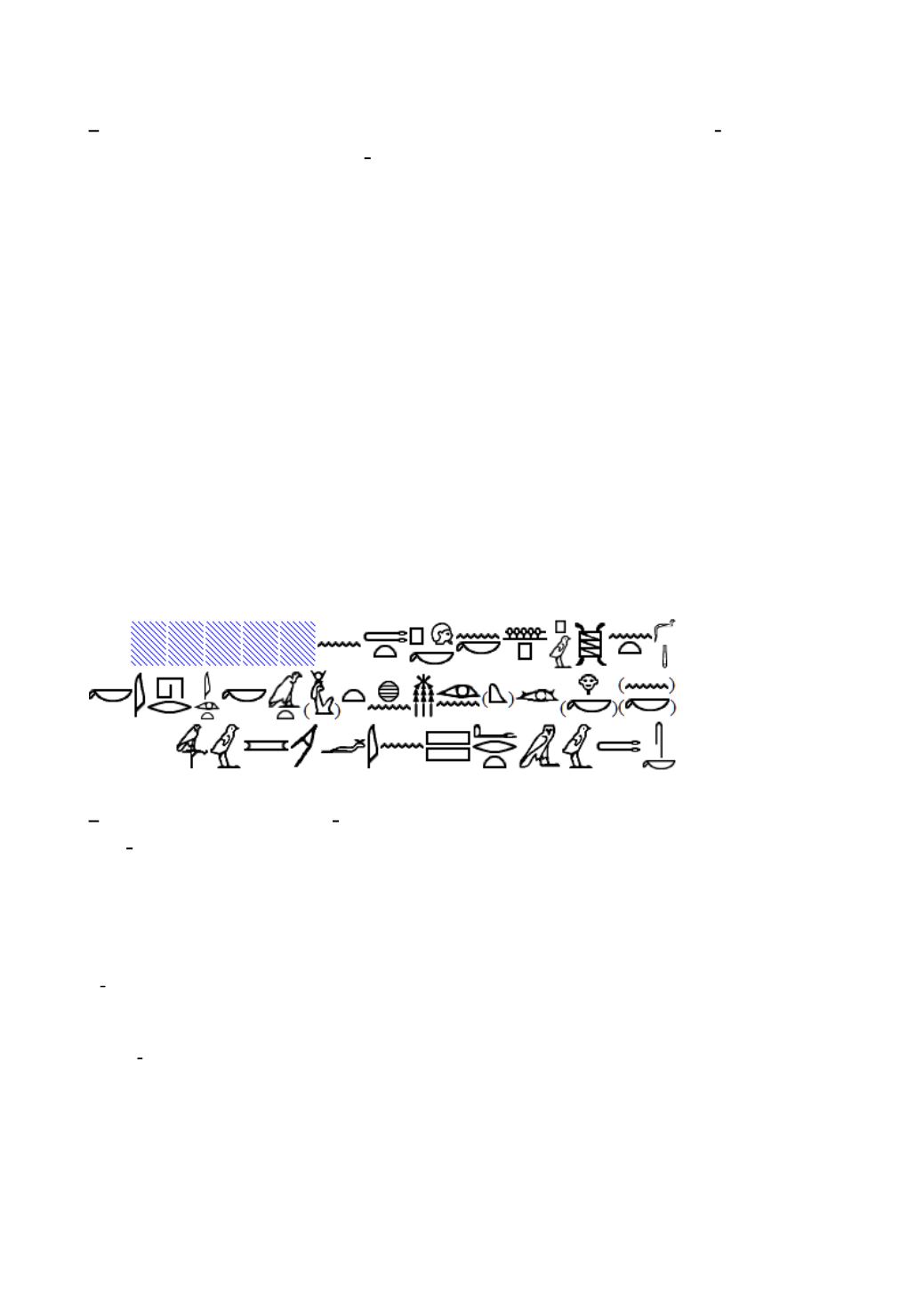

385
dd-mdw swt
c
ḥ
c
Ḥrw 3
1
tp ỉḫmwt
2
(š)
3
snwt.f ỉr gs.f 3st ḥn
c
Nbt-ḥyt tzỉ tw Nt pw ỉn
… .k
4
ḳsw.k s3ḳ.n.k
c
wt.k tzỉ tw
Dichiarazione
: Egli sta invero davanti come Horus sulla riva del fiume con le sue due sorelle
Isis e Nephtis vicino a lui; sollevati Neit, le tue ossa sono state ricomposte, i tuoi arti sono stati
rimessi insieme, sollevati!
1
3
“wahrlich” – HWB 1.
2
ỉḫmt
“bank (of river)” – DME 29.
3
š
dovrebbe trattarsi del segno N37 – cfr. Gardiner EG., p. 491. Comunque in Nt. appare una piccola protuberanza che
lascerebbe adito ad interpretare il segno come Y2.
4 Parte illeggibile in Nt. Potrebbe trattarsi di
ỉ
c
b
“vereinigen” – HWB 30. Mercer traduce “unite”, Allen “”assembled”.
!
!
!
786
!
dd-mdw Nt pw šzp.n.k tp.k tt.n
1
c
(wỉ) ….. n.k ḥr.k dgỉ ỉrỉ.n Msḫnt
2
Mwt.k ỉrt hrw ỉk
sk
3
tw m
c
rt šš
4
nỉ
5
Mr.f
6
Dichiarazione
: Neit, hai ricevuto la tua testa, hai disteso le tue braccia ……. il tuo viso, guarda
Meschenet che ti ha fatto (nascere), tua madre ti ha fatto contento allorché tu fosti nelle fauci
accuminate di Meru
1
tt
“aufmachen” – HWB 966.
2
Msḫnt
la dea delle nascite “Meschenet” – HWB 1210.
3
sk
/
ỉst
particella proclitica avente funzione di convertitore della precedente proposizione – cfr. Allen, §. 16.6.5.
4
šš
/
š3š3
“drehen” – HWB 804 / 838.
5
nỉ
potrebbe trattarsi di
nisbe
su preposizione
n
. – HWB 386.
6
Mr.f
La divinità Meref – cfr. HWB 1208. Da sottolineare che potrebbe in alternativa trattarsi della divinità Mer /
Meru. In tal caso il segno I9 sarebbe del tutto dissociato dal nome e potrebbe rappresentare un pronome suffisso “a
lui” legato alle parole precedenti. Di questo avviso è Allen (cfr. op. cit. p. 326). Tale impostazione sarebbe avvalorata
















